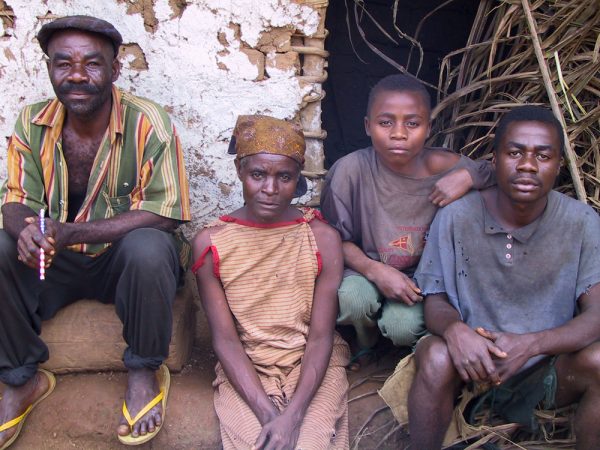DNA hints at ancient cousins
Scientists find evidence of an extinct humanlike species within modern-day Africans
By Roberta Kwok

In the West African country of Cameroon, unusually short people called Pygmies live in the forests. On the other side of the continent, groups of people named Hadza and Sandawe speak languages that include many clicking sounds.
These people are interesting for more reasons than their height or speech. Scientists have just turned up evidence in them of a potentially new, ancient species in the human family tree. That evidence emerged in their DNA. That’s the instructions inside our cells that affect everything from eye color to health.
Modern humans, or humans that are anatomically similar to today’s people, are thought to have emerged in Africa roughly 100,000 to 200,000 years ago. So studying the people who live on that continent today can provide clues about our species’ heritage.
In a new study, scientists have found hints that some previously unknown ancestors of modern humans. They appear to have split off into a separate species more than a million years ago. Later, some modern humans appear to have mated with this sister species. Traces of that sister species persist today in the DNA of some African people. Scientists shared their new findings August 3 in Cell.
Modern humans belong to a group of animals called hominids. In the past, there were other hominids similar to modern humans, such as Neandertals. Those other hominids have since died out.
Sarah Tishkoff works at the University of Pennsylvania in Philadelphia. To learn more about human history, she and her colleagues studied DNA from three hunter-gatherer groups in Africa. They were the Pygmies, Hadza and Sandawe. The team analyzed samples from five people in each group.
A small fraction of the Africans’ DNA appeared to come from other, unknown hominids — the sister species. About 1.1 million years ago, these ancient hominids broke off from ancestors of modern humans to become a separate species. Then, sometime before about 30,000 to 70,000 years ago, this species mated with modern humans. That mating left a genetic mark that remains in the DNA of some people living in Africa today.
This is not the first time that such genetic mixing among hominids has been found. Earlier studies found evidence of Neandertals and other ancient hominids in the DNA of people with European and Asian ancestors.
Some scientists think there might be another explanation for what Tishkoff’s team turned up. Maybe the DNA that seemed to come from some sister species actually belonged to other modern humans that were merely quite different genetically. Those humans might later have been wiped out by disease, environmental changes or wars.
Power Words
hominid A group of animals that includes modern humans, their ancestors and close relatives.
hunter-gatherers People who derive their food supplies not from farming but by taking advantage of the plants and animals they find around them.
Neandertal A group of hominids that vanished about 30,000 years ago.
DNA Instructions in an organism’s cells that tell the cell which molecules to make.
species A group of organisms consisting of similar individuals.







